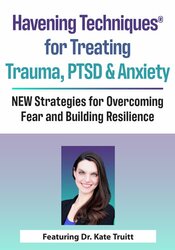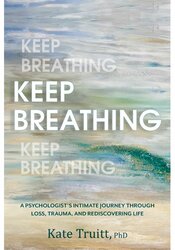The Rainbow of Grief and Healing: Leveraging the Brain’s Power for Post-Loss Growth

Guiding clients through the intricate dance of grief, where the music of the mind plays a tune of both loss and love, is a delicate endeavor. The journey is not about the harsh finality of “letting go” or the stark notion of “moving on.” Instead, it’s about fostering an enduring, loving connection with the departed, harmonizing the bitter with the sweet for long-term healing.
The Rainbow of Grief and Healing therapeutic tool is a beautiful exercise that allows your grieving clients to partner with their brain during this tender journey, transforming their grief into a spectrum of healing colors and meaningful stories.
The essence of this tool lies in its capacity to unite the multitude of memories, despite the pain that may cloud the present moment. It acknowledges the duality of grief—the sorrowful alongside the joyful—and seeks to reconcile these by empowering the positive. It invites clients to delve into the colors of their experiences, each hue representing a cherished memory or an emotional echo of their loved one.
Here’s how it works: As clients process their grief, they are encouraged to identify five different colors that are present in their current experience of grief. Each color represents a memory or an aspect of their relationship with the deceased. This method of associating memories with colors allows clients to externalize and organize their emotions, providing a sense of grounding when feelings become overwhelming.
Clients will then create a narrative for each color—a memory that includes their departed loved one. Guide them to write about these narratives in a journal, crafting stories that illustrate the deceased’s impact on their lives. This exercise offers a chance for clients to integrate these memories, empowering them to carry the presence of their loved one in a healthy way. This process is not only cathartic but also affirms the enduring connection that surpasses physical separation.
This exercise can certainly cause emotions of all kinds to rise to the surface. Should your client’s emotional intensity rise above a certain threshold—you can measure this on the SUD scale or in other ways—guide them to transition to CPR for the Amygdala, a technique that offers emotional respite and grounding. Once steadied, they can return to their colorful journey of memories.
At the exercise’s conclusion, have your client review their story and contemplate a desired emotional state or somatic energy they would prefer to have more of when their brain inevitably returns to their loss. Here, you can employ the Creating Possibilities Protocol, helping them to envision and step into a new state of being. This part of the exercise is a powerful affirmation that grief does not sever the connection with the departed; it transforms it.
Empower your client to carry the positive forward into their lives, connecting to new energy for future experiences. This could be through actions that honor their loved one, choices that reflect learned wisdom, or simply holding onto the warmth of memories that continue to shape their lives.
The Rainbow of Grief and Healing is a therapeutic tool that complements the brain’s natural healing processes. It respects the neuroscience of grief—the way the mind grasps at threads of the past to weave a tapestry of comfort. It’s a tool that aligns with the mind’s desire to find equilibrium, to process pain with the same neural networks that once basked in the joy of togetherness.
In your role as therapist, you have the opportunity to introduce this exercise to those you care for, offering them a way to articulate their grief in hues that speak of love just as loudly as they do of loss. It’s a process that reassures clients that although the music may have changed, the dance of remembrance and connection continues, ever vibrant, ever meaningful.
The Rainbow of Grief and Healing therapeutic tool is a beautiful exercise that allows your grieving clients to partner with their brain during this tender journey, transforming their grief into a spectrum of healing colors and meaningful stories.
The essence of this tool lies in its capacity to unite the multitude of memories, despite the pain that may cloud the present moment. It acknowledges the duality of grief—the sorrowful alongside the joyful—and seeks to reconcile these by empowering the positive. It invites clients to delve into the colors of their experiences, each hue representing a cherished memory or an emotional echo of their loved one.
Here’s how it works: As clients process their grief, they are encouraged to identify five different colors that are present in their current experience of grief. Each color represents a memory or an aspect of their relationship with the deceased. This method of associating memories with colors allows clients to externalize and organize their emotions, providing a sense of grounding when feelings become overwhelming.
Clients will then create a narrative for each color—a memory that includes their departed loved one. Guide them to write about these narratives in a journal, crafting stories that illustrate the deceased’s impact on their lives. This exercise offers a chance for clients to integrate these memories, empowering them to carry the presence of their loved one in a healthy way. This process is not only cathartic but also affirms the enduring connection that surpasses physical separation.
This exercise can certainly cause emotions of all kinds to rise to the surface. Should your client’s emotional intensity rise above a certain threshold—you can measure this on the SUD scale or in other ways—guide them to transition to CPR for the Amygdala, a technique that offers emotional respite and grounding. Once steadied, they can return to their colorful journey of memories.
At the exercise’s conclusion, have your client review their story and contemplate a desired emotional state or somatic energy they would prefer to have more of when their brain inevitably returns to their loss. Here, you can employ the Creating Possibilities Protocol, helping them to envision and step into a new state of being. This part of the exercise is a powerful affirmation that grief does not sever the connection with the departed; it transforms it.
Empower your client to carry the positive forward into their lives, connecting to new energy for future experiences. This could be through actions that honor their loved one, choices that reflect learned wisdom, or simply holding onto the warmth of memories that continue to shape their lives.
The Rainbow of Grief and Healing is a therapeutic tool that complements the brain’s natural healing processes. It respects the neuroscience of grief—the way the mind grasps at threads of the past to weave a tapestry of comfort. It’s a tool that aligns with the mind’s desire to find equilibrium, to process pain with the same neural networks that once basked in the joy of togetherness.
In your role as therapist, you have the opportunity to introduce this exercise to those you care for, offering them a way to articulate their grief in hues that speak of love just as loudly as they do of loss. It’s a process that reassures clients that although the music may have changed, the dance of remembrance and connection continues, ever vibrant, ever meaningful.
What do you do when a patient is hijacked by their emotional brain?

If you treat clients who experience anxiety, trauma, depression, pain, panic or any other stress-based disorder, then no doubt you’ve had moments of feeling helpless watching a client paralyzed by their harmful core beliefs or triggers of traumatic experiences.
Wouldn’t it be great having highly effective easy-to-use tools that directly address the emotions keeping your clients stuck in painful pasts and unable to realize a brighter future?
Utilizing similar mechanisms as Eye Movement Desensitization and Reprocessing (EMDR), Havening Techniques are a new suite of neuroscience-based interventions designed for fast and effective treatment of posttraumatic stress disorder and other fear-based disorders such as anxiety, panic disorder, and phobias – whether your clients are in session, at home or on the go – whenever difficult emotions come at unexpected times!
Watch Havening Techniques Certified Trainer and Global Director of Continuing Education, Dr. Kate Truitt, for this must-see training and discover her secrets for creating a gentle, client-centered approach to trauma-informed, neuroscience-based, and resiliency-focused care.
Wouldn’t it be great having highly effective easy-to-use tools that directly address the emotions keeping your clients stuck in painful pasts and unable to realize a brighter future?
Utilizing similar mechanisms as Eye Movement Desensitization and Reprocessing (EMDR), Havening Techniques are a new suite of neuroscience-based interventions designed for fast and effective treatment of posttraumatic stress disorder and other fear-based disorders such as anxiety, panic disorder, and phobias – whether your clients are in session, at home or on the go – whenever difficult emotions come at unexpected times!
Watch Havening Techniques Certified Trainer and Global Director of Continuing Education, Dr. Kate Truitt, for this must-see training and discover her secrets for creating a gentle, client-centered approach to trauma-informed, neuroscience-based, and resiliency-focused care.
From unthinkable loss to unbreakable resilience...

In Keep Breathing, Dr. Kate Truitt, a renowned psychologist, applied neuroscientist, and trauma expert, shares her story of unimaginable loss, trauma, and ultimately, healing. Faced with the sudden-gut wrenching death of her fianće just one week before their wedding day, Kate found her world shattered, catapulting her into a deep void of profound grief, trauma, shock, and guilt.
Part memoir and part scientific exploration, Keep Breathing uses Kate’s own account as a case study to illuminate the common experiences in our human brain – deep love and devasting loss, exhilaration and pain, life and death – that have the power to both derail our lives and ignite us to rebuild, heal, and grow.
Part memoir and part scientific exploration, Keep Breathing uses Kate’s own account as a case study to illuminate the common experiences in our human brain – deep love and devasting loss, exhilaration and pain, life and death – that have the power to both derail our lives and ignite us to rebuild, heal, and grow.
Meet the Expert:
Dr. Kate Truitt is a neuroscientist and clinical psychologist with an MBA in Healthcare Administration. She has dedicated her life to advancing the treatment of trauma and stress-related disorders. Dr. Truitt is the founder and president of Dr. Kate Truitt & Associates – a neuroscience-based group therapy practice in Pasadena, and the CEO of the Trauma Counseling Center (TCC), with offices throughout Los Angeles. She founded Viva Excellence to provide cutting edge training and seminars globally that bring together the newest advancements in the fields of neuroscience and resiliency, as well as stress and trauma treatments. Her clinical practice, scientific studies, and trainings are specialized in the treatment of PTSD/complex trauma, panic disorders and anxiety, phobias, as well as other stress-related disorders. Her research is on brain health during the recovery process, treatment outcomes, and psychophysiology. Dr. Truitt consults globally for trauma treatment programs, leads research initiatives, and provides trainings on trauma as well as personal empowerment. Dr. Truitt founded and is the Chairman of the Board for the Amy Research Foundation, a 501c3 organization to advance research into the innovative treatment realm of neuroscience based mental health treatment. She is also a certified trainer as well as the global director of continuing education for the Havening Techniques.
Learn more about her educational products, including upcoming live seminars, by clicking here.
Learn more about her educational products, including upcoming live seminars, by clicking here.



